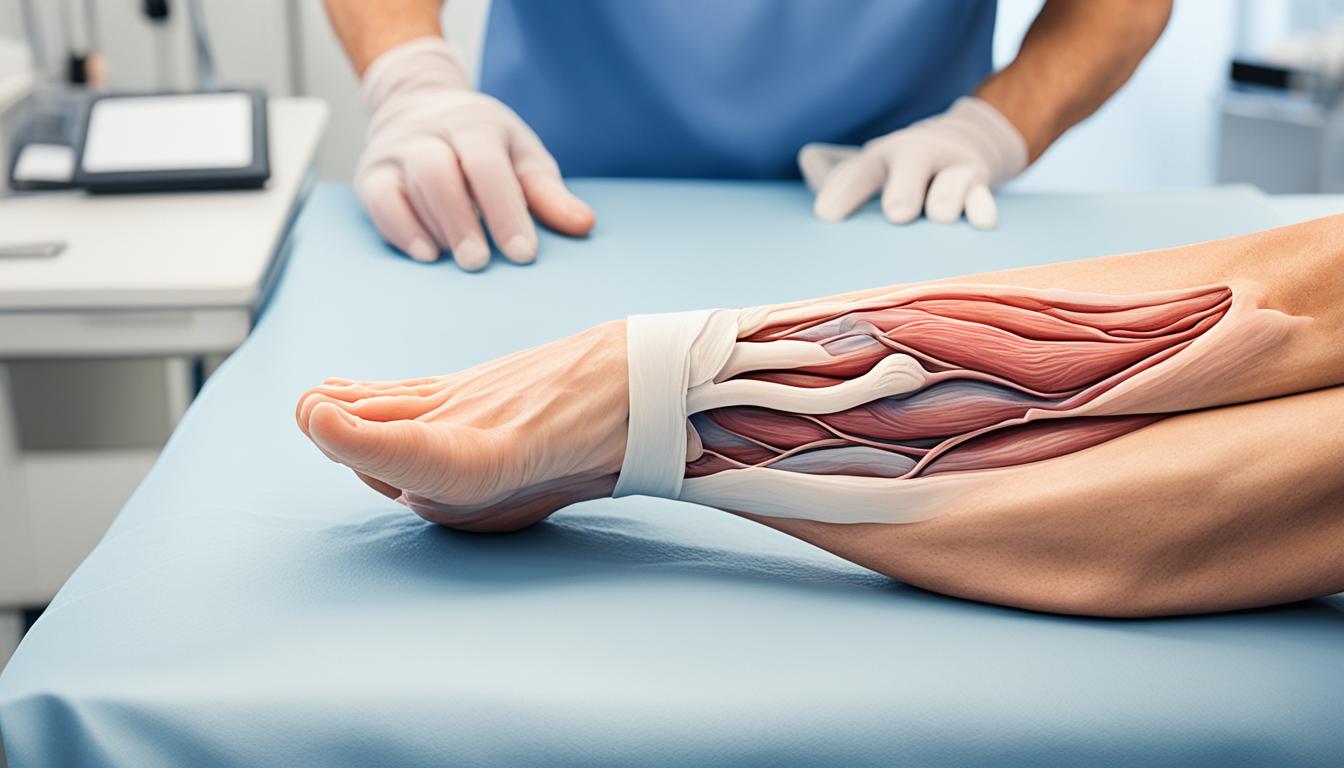Sarcoma is a cancer type that affects soft tissues and bones. It’s more likely to develop in fat, muscle, blood vessels, and tendons. While it’s rare in adults, it’s fairly common in children. In fact, it makes up about 15% of childhood cancer cases.
The signs of soft tissue sarcoma often include pain and a painless lump or swelling. On the other hand, bone sarcoma originates in the bone. It can lead to pain and a noticeable lump. We don’t know the exact cause but we do know some things that increase the risk. For example, past radiation treatments and certain genetic conditions can make you more likely to develop sarcoma.
Diagnosis starts with a doctor’s exam and discussions about your symptoms and health history. They might then use imaging tests and lab work to confirm a diagnosis. Treating sarcoma can involve surgery, radiation, or chemo. What you need depends on how far the cancer has spread and its type.
Key Takeaways:
- Sarcoma can affect different types of tissues, including soft tissues and bones.
- Soft tissue sarcomas are more common in children, accounting for around 15% of childhood cancers.
- Common symptoms of sarcoma include pain and the presence of a painless lump or swelling.
- Diagnosis involves a physical examination, medical history, imaging scans, and laboratory tests.
- Treatment options for sarcoma may include surgery, radiation therapy, and chemotherapy.
Types of Soft Tissue Sarcoma
Soft tissue sarcoma is a group of cancers. They come from soft tissues in the body. There are over 50 types, each needing different treatments. Here are the common types:
1. Angiosarcoma
Angiosarcoma is rare and starts in blood or lymph vessels. It can be in skin, breast, liver, or deep tissues.
2. Gastrointestinal Stromal Tumor (GIST)
GIST affects the stomach and small intestine’s cells. It’s a type of sarcoma.
3. Liposarcoma
Liposarcoma grows in fat tissue. It’s usually in the abdomen or thighs. There are different types based on cell appearance.
4. Leiomyosarcoma
Leiomyosarcoma affects organs’ smooth muscle. It happens in the uterus, stomach, and blood vessels.
5. Synovial Sarcoma
Synovial sarcoma usually grows around joints. It can also be in the head or neck.
6. Neurofibrosarcoma
Neurofibrosarcoma starts in nerve protective lining. It shows up wherever there are nerves.
7. Rhabdomyosarcoma
Rhabdomyosarcoma forms in skeletal muscle. It’s common in children and teens.
8. Fibrosarcoma
Fibrosarcomas affect fibroblasts in connective tissue. They can appear in bones, soft tissues, or skin.
9. Myxofibrosarcoma
Myxofibrosarcoma grows in older adults’ arms and legs. It’s a slow-growing tumor.
10. Mesenchymomas
Mesenchymomas are rare tumors. They can appear anywhere in the body.
11. Vascular Sarcoma
These sarcomas start in blood vessels. They’re rare and can show up in skin, lungs, or deep tissues.
12. Schwannoma
Schwannoma affects the nerve coverings. It’s found in the head, limbs, and spine.
13. Kaposi’s Sarcoma
Kaposi’s sarcoma is a skin tumor. It’s linked to HHV-8 virus and weak immune systems.
Knowing about soft tissue sarcoma types is key for diagnosis and treatment. Treatments differ by sarcoma type, location, and stage.
Prognosis and Future Outlook
The sarcoma prognosis depends on many things like the type, grade, and where it is. For soft tissue sarcoma that’s just in one spot, the 5-year survival is about 81%. If it has spread regionally, this rate drops to 58%. For bone sarcoma, localized cancers have a 77% 5-year survival rate, whereas regional cancers are at 65%.
Survival rates are getting better with new research and treatments. Scientists are focusing on how sarcoma stem cells grow tumors and resist treatment. This focus is leading to new and very promising therapies like stem cell treatments and targeted therapies.
The future for sarcoma patients relies on more scientific progress and research funding. An in-depth look at sarcoma stem cells and better treatment development is key. Each new finding in sarcoma care brings hope to those fighting this cancer. This research is pushing the boundaries of what’s possible in sarcoma treatment.

